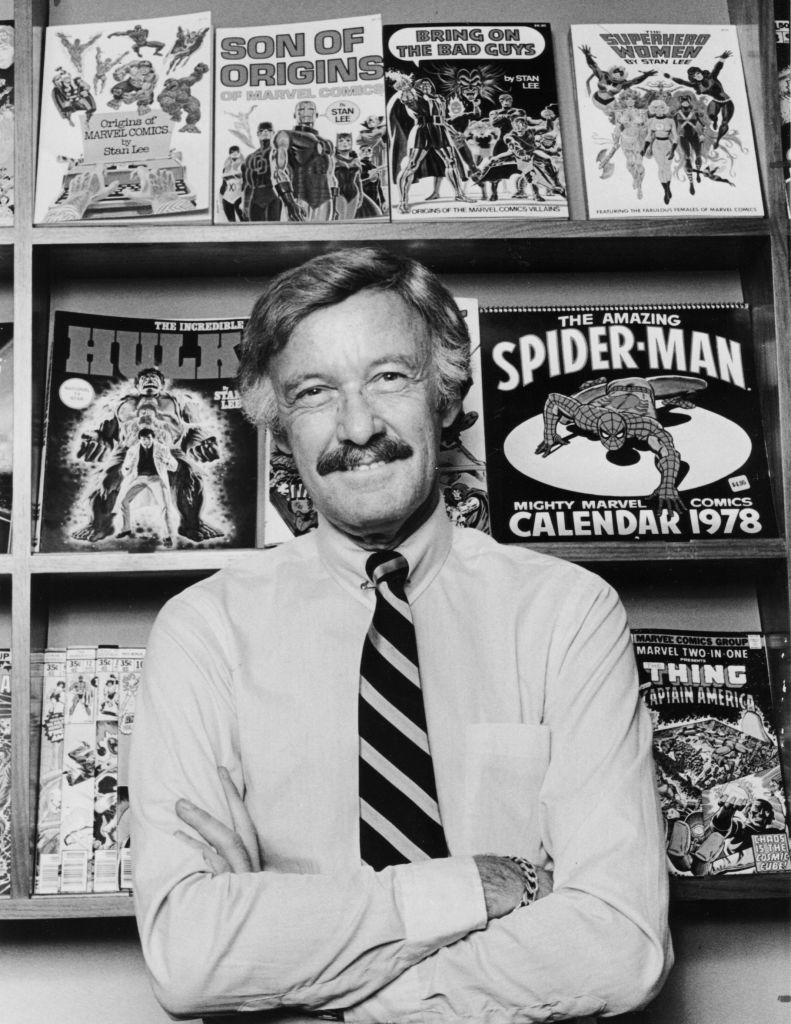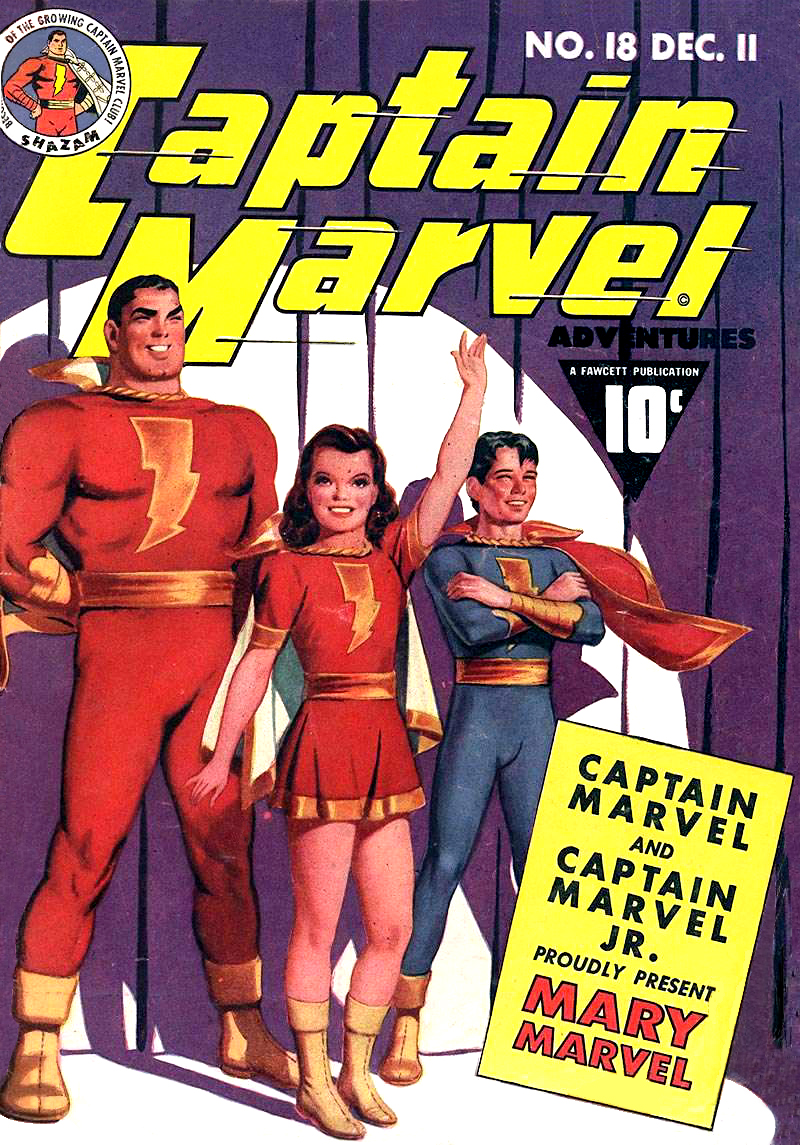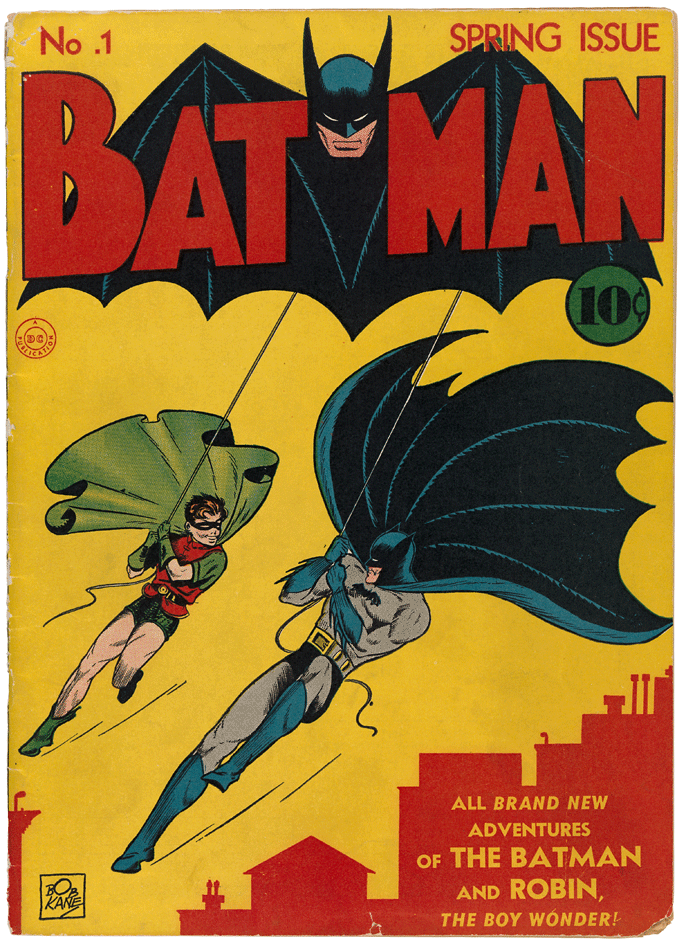Marvel Comics or DC Comics? There’s no right answer, of course. Now, there are other publishers in the fray, but for decades, Marvel Comics and DC Comics dominated the market and went head-to-head.
DC played a major part in comic book history by inventing the comic superhero in the 1930s. Marvel came along with their own incredibly popular conception of the art form in the early 1960s. Before we dig into the DC vs. Marvel Comics salvos, there’s a very important question to answer…
What is a Comic Book?
A story told by a combination of words and images. That’s it. The “x” factor is the imagination of the creators, where the magic happens.
Issue covers attract attention with a vivid presentation of the hero, and evocative words to give a glimpse of what lay inside. A “splash page” (or sometimes pages) marks the official start of the story, with a single image covering the whole page. Sometimes the issue subtitle is featured here, or at the end of the story, if the creators don’t want to spoil a surprise plot twist.
The multiple panels of a given comic book page are meant to be read from top-left to bottom-right. The story is comprehended best when taking in the words and images simultaneously. As it can be a bit more complex than “one character says something” in a panel, then “another character replies” in the next panel. Word balloons and thought bubbles or captions will contain font changes to emphasize the emotion and intent of what is being said.
What are the Roles of Comic Book Creators?
There are distinctive roles in the production of a comic book, which are basically the same whether talking about Marvel or DC, or anyone else. One person could assume each role, or a single person can take on multiple roles. A lot of this is done digitally now, but back in the classic days, it was all done by hand.
It starts with the “writer,” who creates the story to present to the artists. Sometimes this can be as detailed as a screenplay, or just a loose collection of ideas.
The visual aspect of the comic starts with the “penciller,” who draws on relatively heavy white bristol board. They concentrate on character poses and facial expressions.
Next, the “inker” or “finisher” goes over the pencil lines with heavy black ink, and also can add dark blocks of shading. Sometimes the penciller provides all of the detail that gets inked, or sometimes does just a spare sketch, letting the inker fill in the detail.
Next up is the “colorist.” They give every artistic element in the comic a color code, and makes sure that all colors stay consistent throughout the comic.
The “letterer” will then take over, rendering the letters on the page that convey dialogue or a sound effect in the size or shape of the word.
The “editor” oversees it all. He/she gives out and coordinates assignments, copyedits, resolves issues—what could be called “quality control.” The editor can also provide creative input and determine the direction of a comic from issue-to-issue.
Superheroes and Superpowers
We have narrowed the focus from the thousands of comic book superheroes to some of the most important: Regarding DC vs. Marvel, DC has Superman and Batman, and Marvel Comics has The Fantastic Four, and Spider-Man. With “third parties,” there’s Captain America and Captain Marvel. Apologies if we didn’t include your favorite.
With every superhero comes superpowers. It has been calculated that throughout the history of comic books, thousands of superheroes have possessed millions of superpowers. The above superheroes have some of the best and most memorable, but there’s also some not-so-great ones that didn’t catch on, like commanding squirrels, turning into a door (but just between adjoining rooms), and detaching one’s own arms to use as bludgeons. Yes, those characters really did appear in comic books…
Superman Throws Down the Gauntlet
Superman, the first true comic book superhero, was introduced in “Action Comics” #1, released in 1938 by DC Comics. It was among the first bona fide comic books. Creators Jerry Siegel and Joe Shuster threw down the gauntlet with the cover, which depicts Superman holding a car over his head. He soon had a comic book of his own, and in it, he displayed powers of flight, X-ray vision, super speed, super hearing, and invincibility. Later, his superpowers became cosmic in scope. He was resistant to everything except Kryptonite, a substance that kept all these wondrous abilities in check. Artistically, Superman’s ever-present cape had the useful function of portraying movement when the superhero was hurtling through the air.
Superman’s dual identity is a major component of the character. As Clark Kent, he is a modest newspaper reporter with glasses, and when peril happens, he becomes Superman. Significantly, love interest and fellow reporter Lois Lane, did not know that Clark Kent was Superman. She thought nothing of Kent, but was wildly attracted to Superman.
Batman Arrives
A year after Superman’s debut, DC’s “Detective Comics” #27 introduced another iconic character, this time imagined by Bob Kane and Bill Finger: Batman, who soon got his own separate comic book. The wrinkle with Batman is that he lacks superpowers, he’s just a vigilante possessing high intelligence, innovative gadgets, and fighting abilities. He was soon accompanied by Robin the Boy Wonder, which would create a craze for superhero kid sidekicks.
Believe it or not, Leonardo da Vinci influenced Batman’s portrayal. The famed Renaissance polymath drew what was called an “ornithopter,” basically a machine intended to allow human flight using distinctly bat-like wings.

Stan Lee at his Manhattan Office, 1978, (Photo by Gerald S. Williams/Newsday RM via Getty Images)
Golden Age of Comics
Superman, Batman, and many other popular superheroes played a big part in the Golden Age of comics. The publishing of “Action Comics” #1 is considered the start of this era. It lasted for about a decade. Comic book sales were in the millions and many companies were producing the media, but the popularity of superheroes waned after World War II, and the Golden Age ended.
Captain America, Success in Marvel’s Prehistory
The character Captain America, created by Joe Simon and Jack Kirby can be considered the first truly successful superhero for Timely Comics, the company that became Marvel Comics, and could be seen as the first manifestation of DC vs. Marvel.
Patriotism was greatly heightened right before the United States entered World War II, and Nazi atrocities became common knowledge. Turns out, a number of Timely creatives were Jewish, so they were enthusiastic about heroes fighting Nazis in comic books. In fact, the cover of “Captain America Comics” #1, published in late 1941, features our hero socking Hitler in the face. Captain America was a normal guy at first, but was injected with a “super soldier serum” that enhanced his physical and mental abilities. In issue after issue, hapless members of the Axis, were pummeled and the public ate it up.
It was in the pages of “Captain America” where future superstar Stan Lee would have his start. In fact, he conceptualized Captain America’s iconic primary weapon, his shield.
Captain Marvel
The title “Marvel” first popped up with Superman competitor Captain Marvel. The character first appeared in “Whiz Comics” #2 issued in late 1939 by Fawcett Comics, and was created by writer Bill Parker and artist C.C. Beck.
Captain Marvel is the alter ego of Billy Batson, a 12-year-old orphan who transformed into the hero every time he uttered “Shazam.” This magic word is an acronym for the names of historical mythological figures, whose superpowers would suddenly be possessed by Captain Marvel. “Captain Marvel Adventures” ended up outselling the “Superman” comic in the mid-40s, and soon, there were other members of the Captain Marvel Family, including Captain Marvel Jr. and Mary Marvel.

“Captain Marvel Adventures” #18 comic book, published in 1942, first appearance of Mary Marvel, credit Wikimedia Commons
Silver Age
The next significant moment in comic book history is known as the Silver Age, which started in 1956, when DC began re-introducing classic superheroes. The success of this return led to the creation of the Justice League of America, which included Golden Age icons like Batman and Superman. “Justice League of America” #1 was released in late 1960. A discussion about the success of this comic between DC and Marvel’s respective publishers, led to Marvel’s publisher contacting managing editor and art director Stan Lee and telling him to create a new superhero team, post-haste. The DC vs Marvel Comics rivalry was on.
At the point he received the call, Lee was sick of the day’s comic book trends and was close to quitting. With nothing to lose, Lee left clichés behind and came up with his own unique take on a superhero team. The result was The Fantastic Four, the big bang moment for the Marvel Universe, a place in which all Marvel characters resided.
Secret identities were out, and for the first two issues, even costumes were out. Instead of the usual “crimefighters answer a call for help” plotline, Lee had The Four go on adventures, during which the action would happen. Internal conflicts and unresolved hatred occured as well. Lee would say, “I don’t think superpowers automatically means there won’t be any personality problems, family problems or even money problems. I just tried to write characters who are human beings who also have superpowers.”
Lee created an outline and handed it over to artist Jack Kirby, who had serious cred, having drawn Superman and co-conceived Captain America. The Lee/Kirby team would go on to create 102 consecutive issues of Fantastic Four, considered a jaw-dropping feat. They also conceived of a considerable number of the most legendary members of the Marvel Universe.
In many ways, Kirby made comic book history by creating the basic template for a superhero. He also pioneered “dynamic posing”—drawing a figure that is in motion rather than standing still, making for a more expressive comic book character.
“The Fantastic Four” #1 comic book, published in November, 1961, introduced us to the team. They start out normal people: brilliant scientist Reed Richards, his fiancée Susan Storm, Sue’s kid brother Johnny, and test pilot Ben Grimm, who is Richards’ friend. Wanting to beat the communists into space, they commandeered a rocket. Immediately after entering Earth orbit, they are hit by cosmic rays, and upon landing, they begin feeling the effects of the radiation.
Storm becomes invisible, Grimm transforms into a rocklike orange being, Richards’ body begins stretching out to improbable lengths, and Johnny erupts in flames and begins to fly. Richards became Mr. Fantastic, Storm became the Invisible Girl, Grimm is the Thing and Johnny is the Human Torch.

“Batman” #1 comic book, published in 1940, credit Wikimedia Commons
Lee became the biggest influencer in the world of United States comic book publishing. He was a tireless promotor of the Marvel brand, and his presence on the letters page became legendary. This page played a big part in forming a special connection with loyal readers. He was never spiteful when referring to DC, cheekily referring to the company as “Distinguished Competition.”
Lee was also a social progressive, which was given form in the comics he oversaw. He created heroes that were also minorities. He saw racism and bigotry as major social ills, and felt that exposing that evil is the way to vanquish it.
Doctor Doom, the Ultimate Villain
For every superhero, there’s a villain. After all, every story needs conflict to be interesting. Superman had Lex Luthor, and Batman had a number of famed foes. But Lee and Kirby superseded them all with the creation of Doctor Doom, who is considered by some to be the best villain to ever grace the pages of a comic book. Take that, DC!
The aforementioned villains tended to just enjoy being evil, positively gleeful about doing dastardly deeds, but Doctor Doom was a more complex character, one that might even garner sympathy. He was the orphaned son of occult-practicing gypsies from Eastern Europe. He would get into the black arts himself, and also had scientific genius.
In his college dorm room, Doom built a device that would let him contact his mother’s spirit. But when he turned the machine on, it exploded, mutilating his face. He was expelled became a wanderer, falling in with a group of monks in Tibet who reveal black magic secrets to him and help him design his costume. His mission now was simple—world domination.
Doctor Doom was a tortured soul, desperately wanting to save his mother’s soul, and he envied Richards, with his adversary’s success and Doom’s failure etched on his injured face.
Your Friendly Neighborhood Spider-Man
There’s a third person who played a big part in this significant era of DC vs. Marvel —Steve Ditko, co-creator of Spider-Man. In 1962, as Lee was devising Spidey, he felt Ditko’s artistry suited Spider-Man better than Kirby’s. The result was a less muscular, more diminutive figure. His costume was understated, just featuring a web motif and a spider silhouette on the chest.
Instead of the teenager being just a sidekick, a la DC, he was the main character, a meek, geeky teen orphan named Peter Parker. After being bitten by a radioactive spider, he acquired spider-like powers. Parker is super-strong, agile, able to stick to surfaces, and developed “spider-sense,” a psychic-like way of perceiving danger. He put his keen intellect to work and devised a wrist-mounted device that shoots artificial webs strong enough to support his weight when sailing across the urban landscape.
Spider-Man’s first comic book appearance was in 1962’s “Amazing Fantasy” #15. His own comic would soon follow, and the Lee/Ditko duo would also create all of Spider-Man’s most hallowed adversaries.
So, why not explore the world of comic art, or even try to create some of your own? You don’t have to be stuck choosing between Marvel or DC. The superheroes mentioned here are a great place to start, and like every comic book enthusiast, you’ll discover what appeals to you. As Stan Lee said in every letter sign-off: Excelsior!
Are you feeling motivated to create your own comic book hero after reading this blog post? Please view suggested Arteza products below and let the artistry begin!
















